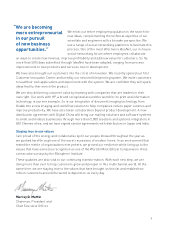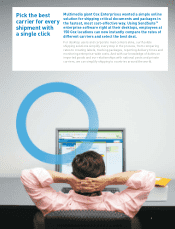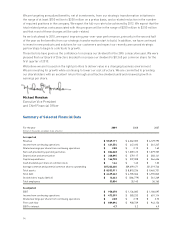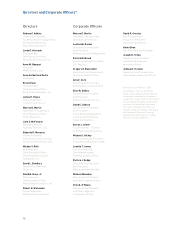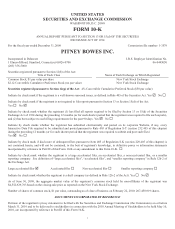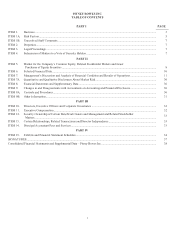Pitney Bowes 2009 Annual Report Download - page 17
Download and view the complete annual report
Please find page 17 of the 2009 Pitney Bowes annual report below. You can navigate through the pages in the report by either clicking on the pages listed below, or by using the keyword search tool below to find specific information within the annual report.
15
Reconciliation of Reported Consolidated
Results to Adjusted Results
For the year 2009 2008 2007
(Dollars in thousands, except per share amounts)
GAAP income from continuing operations before income taxes,
as reported $ 693,176 $ 713,177 $ 660,711
Restructuring charges and asset impairments 48,746 200,254 264,013
MapInfo purchase accounting — 492 16,926
Other income and expense 4,450 5,712 2,956
Legal settlements, net — — (380)
Income from continuing operations before income taxes, as adjusted 746,372 919,635 944,226
Provision for income taxes, as adjusted 251,505 315,647 323,870
Preferred stock dividends of subsidiaries attributable to
noncontrolling interests 21,468 20,755 19,242
Income from continuing operations, as adjusted 473,399 583,233 601,114
Interest expense, net 203,906 216,450 241,871
Provision for income taxes, as adjusted 251,505 315,647 323,870
Preferred stock dividends of subsidiaries attributable to
noncontrolling interests 21,468 20,755 19,242
EBIT $ 950,278 $ 1,136,085 $ 1,186,097
GAAP diluted earnings per share, as reported $ 2.04 $ 2.00 $ 1.66
Loss (income) from discontinued operations 0.04 0.13 (0.03)
GAAP diluted earnings per share from continuing operations,
as reported 2.08 2.13 1.63
Restructuring charges and asset impairments 0.15 0.69 0.87
Tax adjustments 0.05 (0.04) 0.16
MapInfo purchase accounting — — 0.05
Diluted earnings per share from continuing operations, as adjusted $ 2.28 $ 2.78 $ 2.72
GAAP net cash provided by operating activities, as reported $ 824,068 $ 1,009,415 $ 1,079,707
Capital expenditures (166,728) (237,308) (264,656)
Free cash flow 657,340 772,107 815,051
Special pension plan contributions 125,000 — —
Payments related to restructuring charges 105,090 102,680 31,568
Reserve account deposits 1,664 33,359 62,666
Proceeds from sale of training facility — — 29,608
Discontinued operations — 593 4,263
Free cash flow, as adjusted $ 889,094 $ 908,739 $ 943,156
The sum of the earnings per share amounts may not equal the totals above due to rounding.
Management believes this presentation provides a reasonable basis on which to present the adjusted financial information. The Company’s financial results are reported in
accordance with generally accepted accounting principles (GAAP). The earnings per share and free cash flow results are adjusted to exclude the impact of special items such as
restructuring charges and asset impairments, which materially impact the comparability of the Company’s results of operations. The use of free cash flow has limitations. GAAP
cash flow has the advantage of including all cash available to the Company after actual expenditures for all purposes. Free cash flow is the amount of cash that management
could have available for discretionary uses if it made different decisions about employing its cash. It adjusts for long-term commitments such as capital expenditures, as well as
special items such as cash used for restructuring charges and contributions to its pension funds. All of these items use cash that is not otherwise available to the Company and
are important expenditures. Management compensates for these limitations by using a combination of GAAP cash flow and free cash flow in doing its planning.
The adjusted financial information and certain financial measures such as EBIT and EBIT to interest are intended to be more indicative of the ongoing operations and economic
results of the Company. EBIT excludes interest and taxes, and as a result has the effect of showing a greater amount of earnings than net income. The Company believes that
interest and taxes, though important, do not reflect management effectiveness as these items are largely outside of its control. In assessing performance, the Company uses
both EBIT and net income.
This adjusted financial information should not be construed as an alternative to our reported results determined in accordance with GAAP. Further, our definition of this adjusted
financial information may differ from similarly titled measures used by other companies.


